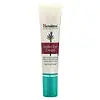What's inside
What's inside
 Key Ingredients
Key Ingredients

 Benefits
Benefits

 Concerns
Concerns

 Ingredients Side-by-side
Ingredients Side-by-side

Water
Skin ConditioningParaffinum Liquidum
EmollientGlycerin
HumectantCetyl Alcohol
EmollientCetearyl Ethylhexanoate
EmollientGlyceryl Stearate Se
EmulsifyingCetearyl Alcohol
EmollientTriethanolamine
BufferingAloe Barbadensis Leaf Extract
EmollientGlyceryl Stearate
EmollientPEG-100 Stearate
Phenoxyethanol
PreservativeCarbomer
Emulsion StabilisingPterocarpus Marsupium Wood Extract
Skin ConditioningParfum
MaskingWithania Somnifera Root Extract
Skin ConditioningCentella Asiatica Extract
CleansingMethylparaben
PreservativePropylparaben
PreservativeBHT
AntioxidantDisodium EDTA
Water, Paraffinum Liquidum, Glycerin, Cetyl Alcohol, Cetearyl Ethylhexanoate, Glyceryl Stearate Se, Cetearyl Alcohol, Triethanolamine, Aloe Barbadensis Leaf Extract, Glyceryl Stearate, PEG-100 Stearate, Phenoxyethanol, Carbomer, Pterocarpus Marsupium Wood Extract, Parfum, Withania Somnifera Root Extract, Centella Asiatica Extract, Methylparaben, Propylparaben, BHT, Disodium EDTA
Water
Skin ConditioningPropylene Glycol
HumectantParaffinum Liquidum
EmollientCaprylic/Capric Triglyceride
MaskingParaffin
PerfumingSteareth-2
EmulsifyingCetyl Alcohol
EmollientSteareth-21
CleansingGlyceryl Stearate Se
EmulsifyingCetearyl Alcohol
EmollientPetrolatum
EmollientCarbomer
Emulsion StabilisingTriethanolamine
BufferingXanthan Gum
EmulsifyingMethylparaben
PreservativeTocopheryl Acetate
AntioxidantCipadessa Baccifera Flower/Leaf/Stem Extract
Skin ConditioningBergenia Ligulata Root Extract
Skin ConditioningTriticum Vulgare Germ Oil
EmollientPropylparaben
PreservativeDisodium EDTA
Imidazolidinyl Urea
PreservativeWater, Propylene Glycol, Paraffinum Liquidum, Caprylic/Capric Triglyceride, Paraffin, Steareth-2, Cetyl Alcohol, Steareth-21, Glyceryl Stearate Se, Cetearyl Alcohol, Petrolatum, Carbomer, Triethanolamine, Xanthan Gum, Methylparaben, Tocopheryl Acetate, Cipadessa Baccifera Flower/Leaf/Stem Extract, Bergenia Ligulata Root Extract, Triticum Vulgare Germ Oil, Propylparaben, Disodium EDTA, Imidazolidinyl Urea
Ingredients Explained
These ingredients are found in both products.
Ingredients higher up in an ingredient list are typically present in a larger amount.
Carbomer is a polymer of acrylic acid. Its main role is to create a gel consistency.
A high amount of carbomer can cause pilling or balling up of products. Don't worry, most products contain 1% or less of carbomer.
Cetearyl alcohol is a mixture of two fatty alcohols: cetyl alcohol and stearyl alcohol. It is mainly used as an emulsifier. Emulsifiers help prevent the separation of oils and products. Due to its composition, it can also be used to thicken a product or help create foam.
Cetearyl alcohol is an emollient. Emollients help soothe and hydrate the skin by trapping moisture.
Studies show Cetearyl alcohol is non-toxic and non-irritating. The FDA allows products labeled "alcohol-free" to have fatty alcohols.
This ingredient is usually derived from plant oils such as palm, vegetable, or coconut oils. There is debate on whether this ingredient will cause acne.
Due to the fatty acid base, this ingredient may not be Malassezia folliculitis safe.
Learn more about Cetearyl AlcoholCetyl Alcohol is a fatty alcohol. Fatty Alcohols are most often used as an emollient or to thicken a product.
Its main roles are:
Though it has "alcohol" in the name, it is not related to denatured alcohol or ethyl alcohol.
The FDA allows products labeled "alcohol-free" to have fatty alcohols.
Learn more about Cetyl AlcoholDisodium EDTA plays a role in making products more stable by aiding other preservatives.
It is a chelating agent, meaning it neutralizes metal ions that may be found in a product.
Disodium EDTA is a salt of edetic acid and is found to be safe in cosmetic ingredients.
Learn more about Disodium EDTAGlyceryl Stearate Se is a self-emulsifying (SE) form of glyceryl stearate. Self-emusifying means this ingredient automatically blends with water. It is an emulsifier, emollient, and cleansing agent.
As an emulsifier, Glyceryl Stearate Se prevents ingredients such as oil and water from separating. It is also a surfactant, meaning it helps cleanse the skin. Surfactants help gather oil, dirt, and other pollutants so they may be rinsed away easily.
Emollients help your skin stay smooth and soft. It does so by creating a film on top of the skin that helps trap moisture in.
Learn more about Glyceryl Stearate SeMethylparaben is a preservative and is a paraben. It is used to prevent the growth of fungus, mold, and other harmful bacteria. Parabens are chemicals used as preservatives in both cosmetics and food.
Methylparaben can be synthetically created. It can also be found naturally in some fruits, such as blueberries.
Oftentimes, Methylparaben is combined with other parabens to help increase the shelf life.
The safety of Methylparaben is currently being studied. While ongoing studies are looking into the safety of parabens, the results have been very mixed. Some studies have not found Methylparaben to be harmful.
Learn more about MethylparabenParaffinum Liquidum is also known as liquid paraffin. It is a type of highly refined mineral oil.
Like other oils, Paraffinum Liquidum has emollient properties. Emollients help soothe and soften the skin. By creating a barrier to trap moisture within, emollients help keep your skin hydrated.
Paraffinum Liquidum does not irritate the skin and is non-comedogenic.
Learn more about Paraffinum LiquidumPropylparaben is a preservative and is a paraben with antifungal and antimicrobial properties.
This ingredient can be naturally found in plants and insects, but most of it is synthetically manufactured for human use. In cosmetics, it is usually created by reacting para-aminobenzoic acid and propanol (an alcohol).
You can usually find this ingredient in water-based products.
Parabens have come under controversy due to the claim they are hormone disruptors. Studies show conflicting results. We recommend speaking with a professional if you have any concerns.
Propylparaben is commonly found in food, medicine, and cosmetics.
Learn more about PropylparabenTriethanolamine is an emulsifier and pH adjuster. It is created using ethylene oxide and ammonia. This gives Triethanolamine a nitrogen core and a similar scent to ammonia.
As an emulsifier, it prevents ingredients from separating and enhances texture by adding volume to a product.
PH adjusters are common in cosmetic products. The pH of a product can affect the effectiveness of other ingredients. A product with a high pH may also irritate the skin.
Learn more about TriethanolamineWater. It's the most common cosmetic ingredient of all. You'll usually see it at the top of ingredient lists, meaning that it makes up the largest part of the product.
So why is it so popular? Water most often acts as a solvent - this means that it helps dissolve other ingredients into the formulation.
You'll also recognize water as that liquid we all need to stay alive. If you see this, drink a glass of water. Stay hydrated!
Learn more about Water